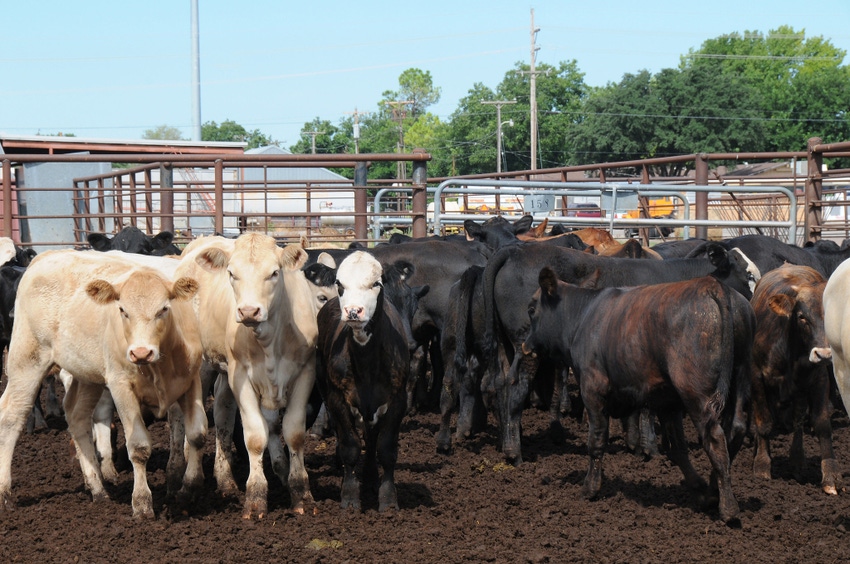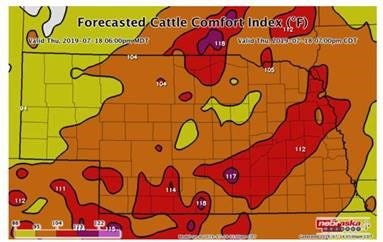Seven-day forecast shows above-average temperatures in parts of Nebraska and Iowa, with heat indexes that will reach critical heat stress emergency.
July 15, 2019

The July weather pattern is setting up to pose challenges this week for feedlot operators and cattle producers in the Midwest, according to the University of Nebraska Extension and the Iowa Beef Center at Iowa State University.
Above-average rainfall across Nebraska has increased the humidity and deteriorated pen conditions, University of Nebraska extension educator Randy Saner said. The seven-day forecast is calling for above-average temperatures, creating heat indexes that will reach critical heat stress emergency, he said, noting that July 18-19 will be critical days as little cloud cover is expected and wind speeds will be at or below 10 mph across the region.
Saner suggested that feedlot operators utilize empty pen space to give cattle greater room and access to water. Supplemental water tanks may be needed to ensure ample water intake for those animals exhibiting signs of stress, he said. Consider placing cattle in pens where they can be away from windbreaks and catch what little wind may be present.

Saner noted that resources from the Nebraska Beef Quality Assurance program outline steps to take during heat episodes, with a webinar on heat stress from University of Nebraska-Lincoln professor emeriti Dr. Terry Mader.
Additional steps may also be considered, Saner said, pointing to research by Dr. Robbi Prichard, previously at South Dakota State University, that has shown that manipulating the amount of feed delivered the day before the highest heat index will help cattle keep their internal temperatures lower.
“By cutting the morning feeding by 25%, we were able to keep cattle cooler in the hottest part of the day. The cattle recovered sooner and ate their feeding in the afternoon and had less heat load throughout the night,” Prichard said.
Saner said Prichard's research shows that contributions from the heat of fermentation, digestion and metabolism of feed consumed in the morning become critical on the day cattle hit the heat stress limit.
To do this, watch the heat index forecasts closely. Cattle may seem fine one day, but if there is not enough night cooling (hours below 70°F with wind) and the heat index will remain high the next day, one should consider taking away some of the morning feed delivery. This lowers the heat load midafternoon, which reduces the amount of heat the animals must shed overnight.
Prichard said, "We typically reduce the morning feed delivery by 25% today, and that may increase to a 50% reduction the morning of high heat index, depending on conditions and cattle status. If we wait for cattle to refuse feed, it is too late." Afternoon deliveries are not adjusted. If the cattle can and do eat afternoon deliveries, that feed generates heat during the night, when there are lower temperatures and less solar gain, thus lowering the total heat load accumulating in the body.
When asked about increasing the roughage in the diets, Pritchard said, "A move to higher-roughage diets is not recommended. Under normal conditions, cattle will react to a diet change by increasing meal size, and forage has proportionally higher heat of fermentation than concentrates. Both of these factors will exacerbate the heat load problem. Staying with the current diet and controlling intake works best for us."
Additional information on heat stress can be found at https://Beef.UNL.edu.
You May Also Like


.png?width=300&auto=webp&quality=80&disable=upscale)
